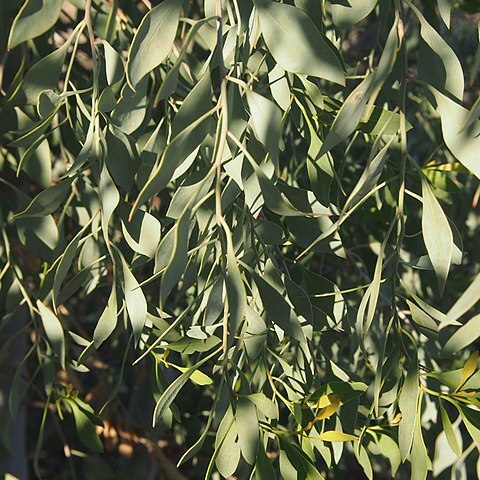A medium sized shrub or small tree. It grows 3-12 m high and spreads 1.5-4 m wide. The bark is smooth and pink. The leaves are 2-5 cm long and broadly sword shaped. Male and female trees are separate. The flowers occur in flowering stalks in the axils of leave near the ends of branches. The fruit are bell shaped and 1 cm long and hang down in clusters. They are lime green. Bark, leaves and twigs have a horseradish taste.


